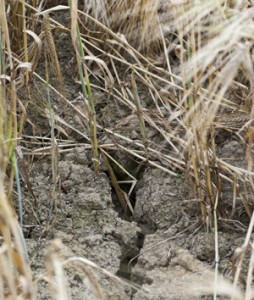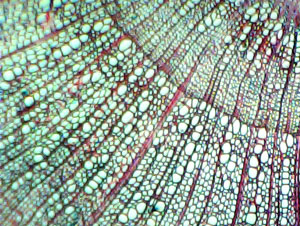Drought and trees

Climate change is now a fact of life and one aspect of this is the occurrence of more extreme weather events. These can take the form of high winds / hurricanes, extended periods of heavy rainfall or conversely periods of drought. Clearly extreme weather can affect all ecosystems; woodlands and forests are no exceptions. Consequently in recent years, a number of organisations have been looking at different tree species in order to understand more about drought resistance (or the ability to withstand prolonged flooding - when the roots are deprived of oxygen).
INRA (French National Institute for Agricultural Research) has been looking at a small tree of the cypress Family (Cupressaceae) - Callitris tuberculata. This grows as a small evergreen tree or shrub in Western Australia. It can survive extreme drought and has been described as “the most drought resistant tree in the world”. Investigations have shown that the circulation of water in the tree is always possible, even under circumstances that would normally lead to CAVITATION. Water travels in the lignified tubes of the xylem, but when there is little water in the soil  and rate of transpiration (water loss from leaves) is high - the water in these tubes is under ‘tension’ and at some point the integrity of the water column(s) is lost; i.e. cavitation has occurred and air is introduced into the xylem tubes / vessels. When this happens, the xylem vessels can no longer move water throughout the plant or tree. Depending on the number of xylem vessels affected a tree can die.
and rate of transpiration (water loss from leaves) is high - the water in these tubes is under ‘tension’ and at some point the integrity of the water column(s) is lost; i.e. cavitation has occurred and air is introduced into the xylem tubes / vessels. When this happens, the xylem vessels can no longer move water throughout the plant or tree. Depending on the number of xylem vessels affected a tree can die.
INRA scientists have developed an instrument / prototype that can measure this phenomenon - the CAVITRON. It measures hydraulic conductivity - the ability of water to flow through a stem etc. and produces a ‘cavitation vulnerability curve’; this gives information about drought tolerance in different species (and genotypes). The work on Callistris suggests that there is ‘leeway’ for improving the drought resistance of temperate species such as oak, pine, spruce etc. The next step is to explore the genes associated with drought tolerance, (that is, identifying QTL’s - quantitative trait loci).
Drought tolerance is not the only means by which plants survive dry periods. Some species ‘use’ drought avoidance by speedily producing seeds and remaining dormant until conditions improve. Other plants have developed thick / fleshy leaves (with waxy cuticles) - i.e. succulence but this is rarely seen in trees species. The creosote bush (found in Mojave desert) can survive extreme drought once established. Water loss is reduced by the resinous, waxy coating of the leaves, plus the leaves are quite small and many can be shed - when conditions are very dry. This adaptation of very small leaves and photosynthetic stems is seen in a number of plants of arid places - they are sometimes termed “switch plants”
Comments are closed for this post.

